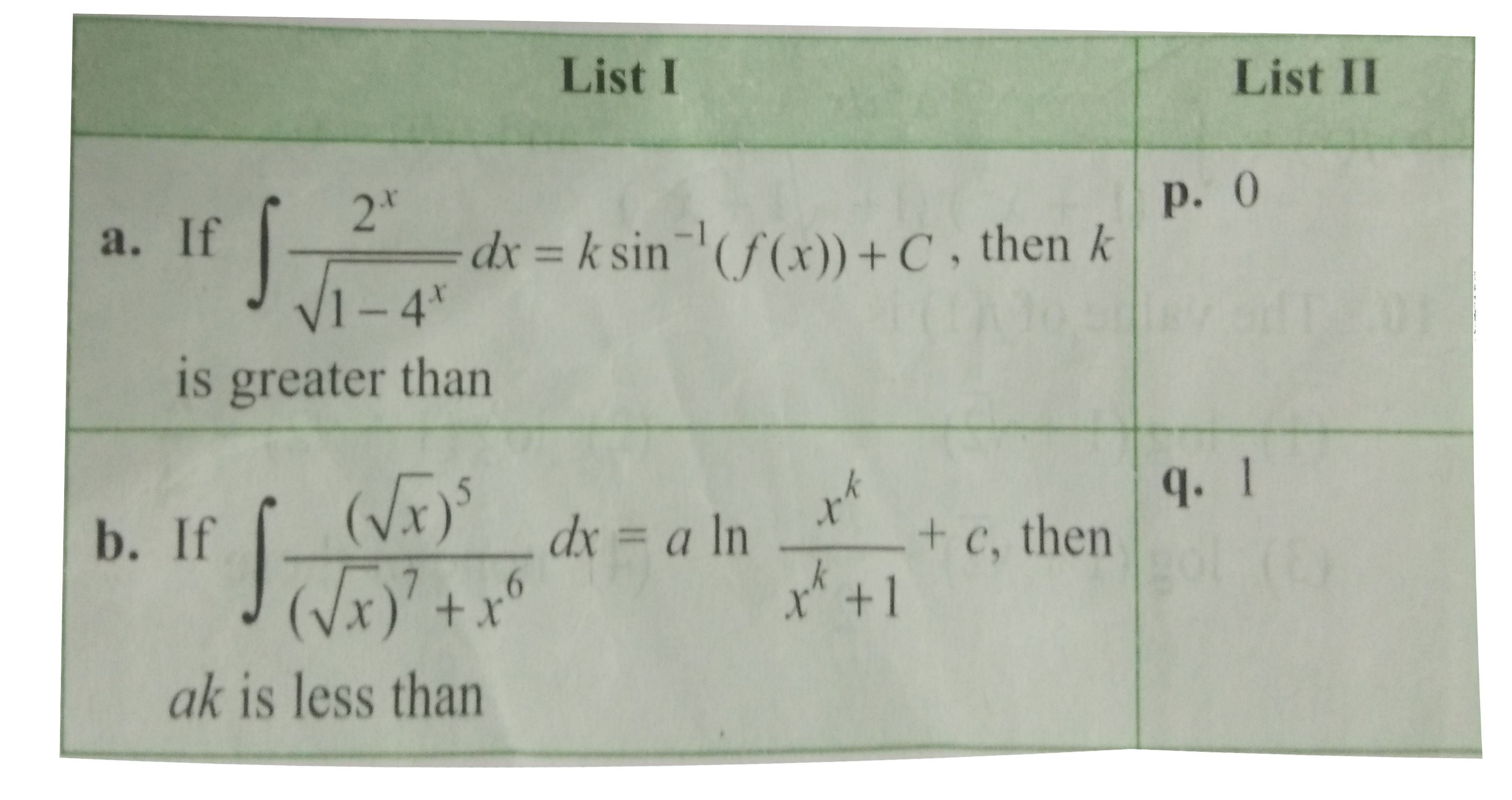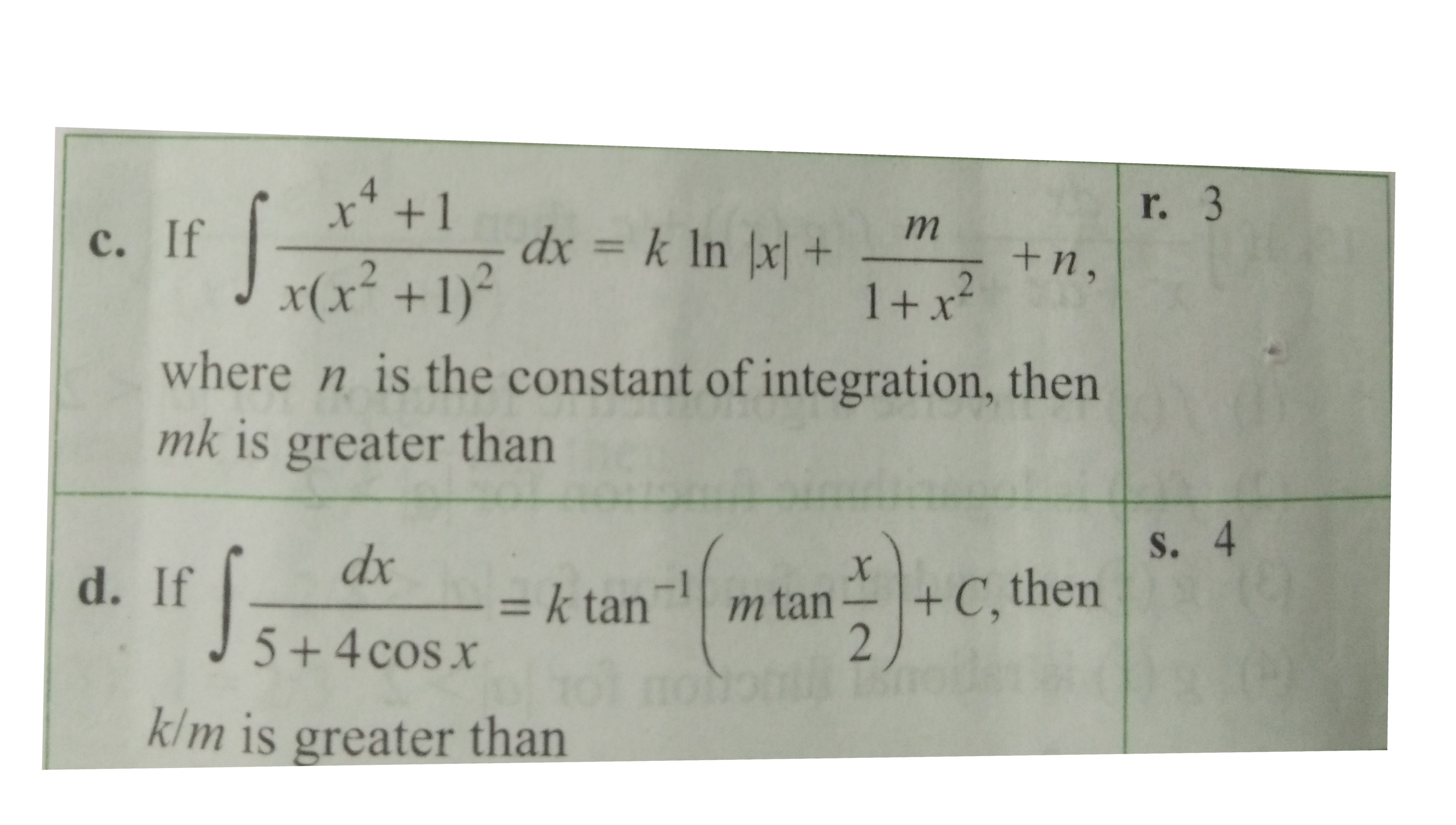If ∫(√x)5(√x)7+x6dx=alog(xk1+xk)+c then a and k areSolution in Bengali
k=−2,f(x)=cot−1x,g(x)=√cosecx−1
k=−2,f(x)=tan−1x,g(x)=√cosecx−1
k=2,f(x)=tan−1x,g(x)=cotx√cosecx−1
k=2,f(x)=cot−1x,g(x)=cotx√cosecx+1
The correct Answer is:B, D
I=∫√cosecx+1dx=∫cotx√cosecx−1dx
Put cosecx−1=t2or−cosecxcotxdx=2tdt
∴I=−∫−cotxcosecxcosecx√cosecx−1dx
=−∫2dt1+t2=−2tan−1t+c
=−2tan−1√cosecx−1+C
=−2[π2−cot−1√cosecx−1]+C
=2cot−1√cosecx−1+C
=2cot−1cotx√cosecx+1+C
Topper's Solved these Questions
- BOOK - CENGAGE PUBLICATIONCHAPTER - INDEFINITE INTEGRATIONEXERCISE - Exercises (Linked Comprehension Type)17videos
INDEFINITE INTEGRATION
- BOOK - CENGAGE PUBLICATIONCHAPTER - INDEFINITE INTEGRATIONEXERCISE - EXERCISES (Matrix Match Type)4videos
INDEFINITE INTEGRATION
- BOOK - CENGAGE PUBLICATIONCHAPTER - INDEFINITE INTEGRATIONEXERCISE - EXERCISES (Single Correct Answer Type)77videos
INDEFINITE INTEGRATION
- BOOK - CENGAGE PUBLICATIONCHAPTER - HYPERBOLAEXERCISE - COMPREHENSION TYPE2videos
HYPERBOLA
- BOOK - CENGAGE PUBLICATIONCHAPTER - INEQUALITIES AND MODULUSEXERCISE - Single correct Answer21videos
INEQUALITIES AND MODULUS
Similar Questions
y=f(x) is a polynomial function passing through point (0, 1) and which increases in the intervals (1,2)and(3,∞) and decreases in the intervals (∞,1)and(2,3).
If f(1)=−8, then the value of f(2) is01:45View SolutionMatch the following lists:

 02:57View Solution
02:57View SolutionI=∫sin8x−cos8x1−2sin2xcos2xdx is equal to:
01:45View SolutionThe circle x2+y2−8x=0 and hyperbola x29−y24=1 I intersect at the points A and B. Equation of a common tangent with positive slope to the circle as well as to the hyperbola is (A) 2x−√5y−20=0 (B) 2x−√5y+4=0 (C) 3x−4y+8=0 (D) 4x−3y+4=0
01:34View SolutionIf f(x)=ax2+bx+c and f(−1)≥−4, f(1)≤0 and f(3)≥5, then the least value of a is
02:34View Solutionint x^(6)sin(5x^(7))dx=(k)/(5)cos(5x^(7))+c, then k=
03:37View SolutionIf int((sqrt(x))^(5))/((sqrt(x))^(7)+x^(6))dx=a log((x^(k))/(1+x^(k)))+c then a and k are
03:53View Solution∫1x−√xdx
View Solution∫1√x+xdx=
05:04View Solution∫√x1+xdx=
02:20View Solution∫1x+√xdx=
01:59View Solution∫(√x+1)(x2−√x)x√x+x+√xdx
03:17View SolutionIf ∫√3√x−3√xdx=x+Ex5/6+Dx1/2+Bx1/3+Ax1/6+log(6√x−1)6+K, then A+B+C+D+E=
03:21View Solutionint(x+5)/(x^(2)+4x+5)dx=alog(x^(2)+4x+5)+btan^(-1)(x+k)+C , then (a,b,k) equals
02:35View Solution∫1√x+xdx=
03:54View SolutionIf ∫√xx(x+1)dx=ktan−1m,then (k,m) is
08:27View Solution

